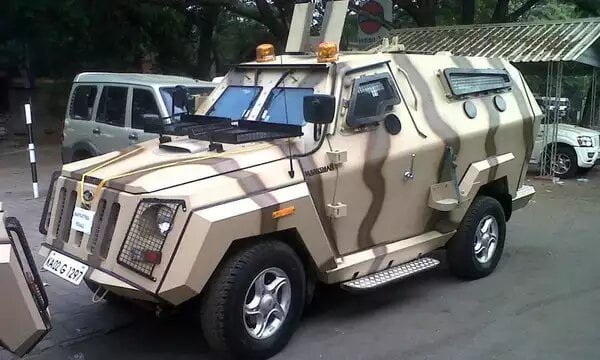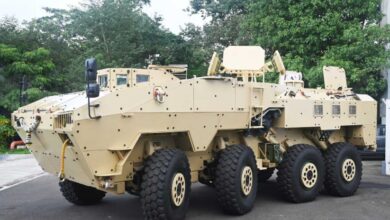From Maruti Gypsy To Tata QRFV: How Made-In-India Defence Vehicles Have Evolved

- The MPV-I is equipped with features like a gun port, roof hatch, protected fuel tank, and ballistic protection, among others. It is powered by a 227 horsepower diesel engine coupled to a 66 powertrain.
- The Mahindra Marksman, one of the most well-liked light combat vehicles, is a compact, bulletproof car with room for up to six passengers.
Currently, Indian automakers choose Mahindra However, before he took over, there was another made-in-India vehicle used by the defence forces called the Jonga. Tata Motors is big when it comes to defence vehicles. It first appeared in the Nissan Patrol P60 and Nissan 4W73 from 1969. (Nissan Carrier). Jonga is produced in Jabalpur.
Even though 20,000 Jonga were still in use as of 2013, it ceased production in 1999. Now that India has its own jet fighter and battle tank, how have people carriers and fighting vehicles changed since then? Look at this.
Personnel carrier and utility
The Maruti Gypsy is the most well-liked of these. Gypsy is based on the Suzuki Jimny SJ40/410 with a larger wheelbase. produced since 1985 at the Maruti Suzuki factory in Gurugram (now only for the Indian Armed Forces). The Jonga was replaced by the Gypsy after the Jonga was retired in 1999, and the Mahindra 550 DXB, which was the MM540 Jeep’s replacement, is still in use today.
The Tata Sumo and Tata Safari Storme, which will shortly replace the Gypsy, are among a lengthy list of defence vehicles produced by Tata Motors. The Mahindra Scorpio with armour is also provided by Mahindra to the armed forces.
In addition to these, the Indian Army also makes use of Force Gurkha, Tata Xenon, Mitsubishi Pajero, and a number of ATVs, including the Arctic Cat Ultra TBX 700, Polaris Sportsman 66, ATV, Polaris Ranger, and Polaris MRZR.
combat vehicle
New information has emerged from this front. A group of brand-new combat vehicles was handed to the Indian Army in Ladakh in July of this year. These Quick Reaction Fighting Vehicles (QRFVs), which are built in India, are advertised as being faster and promising improved manoeuvrability for use in high altitude regions with challenging terrain.
In April of this year, Tata Advanced Systems Limited (TASL) became the first private sector business in India to construct and supply wheeled armoured combat-ready vehicles for the Indian Armed Forces. This was a significant achievement for the Indian military ecosystem.
The military mobility vehicle was developed and produced at TASL’s Pune factory and is based on an 88 Wheeled Armored Platform (WhAP) with the help of the DRDO’s Vehicle Research and Development Establishment (VRDE). The WhAP 88-based flagship product of TASL is India’s first amphibious infantry combat vehicle (Wheeled).
The Indian Army receives a number of combat vehicles from Mahindra. These include the off-road and armoured carrier Mahindra MPV-I, which is resistant to mines. The MPV-I is equipped with features like a gun port, roof hatch, protected fuel tank, and ballistic protection, among others. It is powered by a 227 horsepower diesel engine coupled to a 66 powertrain.
The Mahindra Marksman, one of the most well-liked light combat vehicles, is a compact, bulletproof car with room for up to six passengers. In addition to being safe from small weapons fire, the car is also safe from grenade strikes. In Kashmir, counterinsurgency operations frequently involve the use of marksmen. Surely you have also seen marksmen stationed in high-security zones of Mumbai or Delhi.
There are currently a large number of additional Made-in-India Defense vehicles in use, including the Caspir, OFB Aditya, Mahindra Stratton Plus, Mahindra Rakshak, and others. The vehicle lineup made in India will grow to a much longer length, taking into consideration the development and production capabilities of the local manufacturers.







Facebook Comments